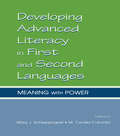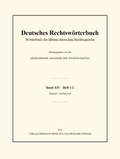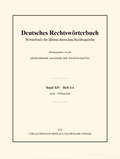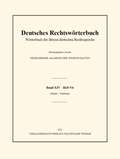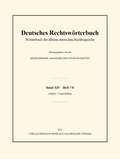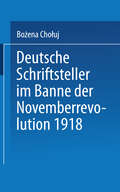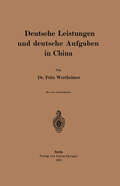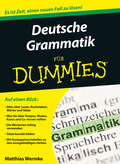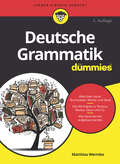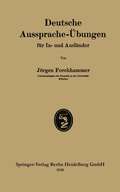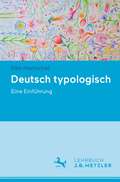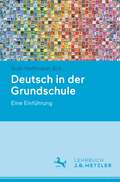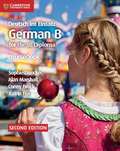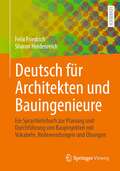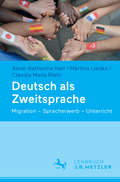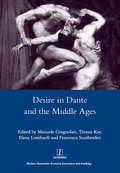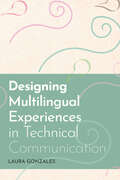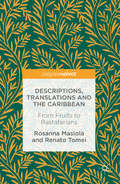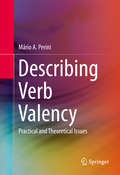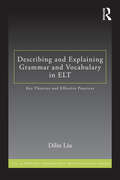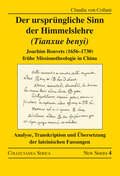- Table View
- List View
Developing Advanced Literacy in First and Second Languages: Meaning With Power
by Mary J. Schleppegrell M. Cecilia ColombiThis book addresses the linguistic challenges faced by diverse populations of students at the secondary and post-secondary levels as they engage in academic tasks requiring advanced levels of reading and writing. Learning to use language in ways that meet academic expectations is a challenge for students who have had little exposure and opportunity to use such language outside of school. Although much is known about emergent literacy in the early years of schooling, much less has been written about the development of advanced literacy as students move into secondary education and beyond. Developing Advanced Literacy in First and Second Languages: Meaning With Power: *brings together work on first and second language acquisition and emphasizes the importance of developing advanced literacy in the first language, such as Spanish for bilingual students, as well as English; *spans a range of theoretical orientations and analytic approaches, drawing on work in systemic functional linguistics, genre theory, and sociocultural perspectives; *addresses the content areas of science, history, and language arts; *provides specific information about genres and grammatical features in these content areas; and *presents suggestions for teacher education. What unites the contributors to this volume is their shared commitment to a view of literacy that emphasizes both the social contexts and the linguistic challenges. The chapters collected in this volume contribute in important ways to research and pedagogy on advanced literacy development for the multilingual and multicultural students in today's classrooms. This book is particularly useful for researchers and students in language and education, applied linguistics, and others concerned with issues and challenges of advanced literacy development in first and second languages.
Developing Advanced Literacy in First and Second Languages: Meaning With Power
by Mary J. Schleppegrell M. Cecilia ColombiThis book addresses the linguistic challenges faced by diverse populations of students at the secondary and post-secondary levels as they engage in academic tasks requiring advanced levels of reading and writing. Learning to use language in ways that meet academic expectations is a challenge for students who have had little exposure and opportunity to use such language outside of school. Although much is known about emergent literacy in the early years of schooling, much less has been written about the development of advanced literacy as students move into secondary education and beyond. Developing Advanced Literacy in First and Second Languages: Meaning With Power: *brings together work on first and second language acquisition and emphasizes the importance of developing advanced literacy in the first language, such as Spanish for bilingual students, as well as English; *spans a range of theoretical orientations and analytic approaches, drawing on work in systemic functional linguistics, genre theory, and sociocultural perspectives; *addresses the content areas of science, history, and language arts; *provides specific information about genres and grammatical features in these content areas; and *presents suggestions for teacher education. What unites the contributors to this volume is their shared commitment to a view of literacy that emphasizes both the social contexts and the linguistic challenges. The chapters collected in this volume contribute in important ways to research and pedagogy on advanced literacy development for the multilingual and multicultural students in today's classrooms. This book is particularly useful for researchers and students in language and education, applied linguistics, and others concerned with issues and challenges of advanced literacy development in first and second languages.
Deutsches Rechtswörterbuch: Wörterbuch der älteren deutschen Rechtssprache. Band XIV, Heft 1/2 - Stegreif – Stocherwort
Was hat Liebe mit Recht zu tun? Wozu diente ein Reilenagel? Was ist ein Schnappreitel ? Diese und andere Fragen beantwortet das Deutsche Rechtswörterbuch, das neben juristischen Fachbegriffen auch Wörter der Alltagssprache in rechtlichem Kontext erklärt. Über 1.200 Jahre Wortgeschichte anhand von Belegen aus der gesamten westgermanischen Sprachfamilie.
Deutsches Rechtswörterbuch: Wörterbuch der älteren deutschen Rechtssprache. Band XIV, Heft 3/4 - Stock – Subhypothek
Was hat Liebe mit Recht zu tun? Wozu diente ein Reilenagel? Was ist ein Schnappreitel ? Diese und andere Fragen beantwortet das Deutsche Rechtswörterbuch, das neben juristischen Fachbegriffen auch Wörter der Alltagssprache in rechtlichem Kontext erklärt. Über 1.200 Jahre Wortgeschichte anhand von Belegen aus der gesamten westgermanischen Sprachfamilie.
Deutsches Rechtswörterbuch: Wörterbuch der älteren deutschen Rechtssprache. Band XIV, Heft 5/6 - Subjekt – Taufzeuge
Was hat Liebe mit Recht zu tun? Wozu diente ein Reilenagel? Was ist ein Schnappreitel ? Diese und andere Fragen beantwortet das Deutsche Rechtswörterbuch, das neben juristischen Fachbegriffen auch Wörter der Alltagssprache in rechtlichem Kontext erklärt. Über 1.200 Jahre Wortgeschichte anhand von Belegen aus der gesamten westgermanischen Sprachfamilie.
Deutsches Rechtswörterbuch: Wörterbuch der älteren deutschen Rechtssprache. Band XIV, Heft 7/8 - taugbar – Toppschilling
Was hat Liebe mit Recht zu tun? Wozu diente ein Reilenagel? Was ist ein Schnappreitel ? Diese und andere Fragen beantwortet das Deutsche Rechtswörterbuch, das neben juristischen Fachbegriffen auch Wörter der Alltagssprache in rechtlichem Kontext erklärt. Über 1.200 Jahre Wortgeschichte anhand von Belegen aus der gesamten westgermanischen Sprachfamilie.
Deutsches Rechtswörterbuch: Wörterbuch der älteren deutschen Rechtssprache. Band XIV, Heft 9/10 – Tor – Trittrecht
Was hat Liebe mit Recht zu tun? Wozu diente ein Reilenagel? Was ist ein Schnappreitel ? Diese und andere Fragen beantwortet das Deutsche Rechtswörterbuch, das neben juristischen Fachbegriffen auch Wörter der Alltagssprache in rechtlichem Kontext erklärt. Über 1.200 Jahre Wortgeschichte anhand von Belegen aus der gesamten westgermanischen Sprachfamilie.
Deutsche Schriftsteller im Banne der Novemberrevolution 1918: Bernhard Kellermann, Lion Feuchtwanger, Ernst Toller, Erich Mühsam, Franz Jung (Literaturwissenschaft)
by Bożena ChołujDeutsche Grammatik für Dummies (Für Dummies)
by Matthias WermkeIhr Wegweiser durch den Dschungel der deutschen Grammatik Mögen Sie Grammatik? Nein? Grämen Sie sich nicht. Sie sind nicht allein. Irgendwann wurden wir alle mit der Grammatik des Deutschen geplagt. Wir mussten Wörter rauf- und runterdeklinieren, absonderliche Verbformen bilden, Schachtelsätze in ihre Einzelteile zerlegen und nach Satzbausteinen suchen, die uns überhaupt nicht interessierten. Grammatik kann zwar wirklich ätzend sein, nützlich ist sie gelegentlich aber auch. Und damit die deutsche Grammatik für Sie eher nützlich als ätzend ist, finden Sie in diesem Buch die wichtigsten Themen leicht verständlich erklärt, jede Menge Beispiele, die Ihnen die Regeln veranschaulichen und viel Wissenswertes rund um die deutsche Grammatik und deren Bedeutung. Für den schnellen Überblick gibt es zahlreiche Tabellen. So verlieren die vielen Regeln ihren Schrecken und werden auch für Grammatikmuffel leicht verständlich.
Deutsche Grammatik für Dummies (Für Dummies)
by Matthias WermkeMögen Sie Grammatik? Nein? Keine Sorge, damit sind Sie nicht allein. Die deutsche Sprache kann ganz schön kompliziert sein. So schwierig Grammatik ist, so nützlich ist sie aber gelegentlich auch. Und damit die deutsche Grammatik Ihnen ganz bestimmt kein Kopfzerbrechen mehr bereitet, finden Sie in diesem Buch die wichtigsten Aspekte leicht verständlich erklärt. Zahlreiche Beispiele veranschaulichen die einzelnen Regeln und nebenbei lernen Sie jede Menge Wissenswertes rund um die deutsche Grammatik und ihre Bedeutung. So verlieren die vielen Regeln ihren Schrecken und werden auch Grammatikmuffeln leicht verständlich.
Deutsche Aussprache-Übungen für In- und Ausländer
by Jørgen ForchhammerDieser Buchtitel ist Teil des Digitalisierungsprojekts Springer Book Archives mit Publikationen, die seit den Anfängen des Verlags von 1842 erschienen sind. Der Verlag stellt mit diesem Archiv Quellen für die historische wie auch die disziplingeschichtliche Forschung zur Verfügung, die jeweils im historischen Kontext betrachtet werden müssen. Dieser Titel erschien in der Zeit vor 1945 und wird daher in seiner zeittypischen politisch-ideologischen Ausrichtung vom Verlag nicht beworben.
Deutsch typologisch: Eine Einführung
by Elke HentschelTypologie als die Einteilung von Untersuchungsgegenständen nach Typen basiert von Fach zu Fach auf unterschiedlichen Typen-Definitionen, die auch innerhalb eines Fachgebiets variieren können. In der Linguistik finden sich spezifische typologische Ansätze in den verschiedensten Teilgebieten, von der Lautlehre bis zur Dialektologie. Der Schwerpunkt der linguistischen Typologie und damit auch dieser Einführung liegt in den Bereichen Morphologie und Syntax. Im Mittelpunkt steht dabei das Deutsche, das anhand zahlreicher Beispiele im Kontext anderer Sprachen betrachtet wird.
Deutsch in der Grundschule: Eine Einführung
by Ruth Hoffmann-ErzDiese Einführung verbindet Themen der Sprachwissenschaft und der Sprachdidaktik und ist speziell auf das Grundschullehramtsstudium Deutsch zugeschnitten. Fachwissenschaftliche Kapitel zu Semiotik, Phonologie, Graphematik, Textlinguistik, Grammatik sind verzahnt mit fachdidaktischen Kapiteln zu Sprechen und Zuhören, Schriftspracherwerb, Lese- und Rechtschreibdidaktik, Texte verfassen und Sprache untersuchen. So wird die Relevanz fachwissenschaftlicher Inhalte für die Lehrerprofessionalisierung ersichtlich. Der Band ist auch für die Fort- und Weiterbildung zu empfehlen. – Im zweifarbigen Layout, mit Definitionen, Beispielen und Aufgaben.
Deutsch Im Einsatz Coursebook: German B for the Ib Diploma (Second Edition) (PDF)
by Sophie Duncker Alan Marshall Conny Brock Katrin FoxAn expertly written German B course now updated for first examination 2020, providing students with thought-provoking materials to help them develop strong language skills and solid critical thinking. The coursebook helps students develop their German language skills as they explore the five themes from the new IB Diploma Language B guide: identities, experiences, human ingenuity, social organisation and sharing the planet. Each unit begins with 'big questions' that get learners thinking about global topics such as, 'how do we express our identity?' These help students appreciate wider issues before developing their reading, writing, speaking and listening skills through international texts, practice exercises and activities in the style of the exam. Answers to questions and audio files for the listening exercises are in the teacher's resource.
Deutsch für Architekten und Bauingenieure: Ein Sprachlehrbuch zur Planung und Durchführung von Bauprojekten mit Vokabeln, Redewendungen und Übungen
by Felix Friedrich Sharon HeidenreichEin Sprachlehrbuch, das speziell für Architekten, Bauingenieure und verwandte Berufsgruppen aller Nationalitäten konzipiert ist, die ihre deutsche Kommunikationsfähigkeit im beruflichen Kontext verbessern wollen. Das Buch kann sowohl für das Selbststudium als auch kursbegleitend eingesetzt werden. Nachdem in der 1. Hälfte des Buches viele Grundlagen der Bauwirtschaft behandelt werden, orientiert sich die 2. Hälfte an den Leistungsphasen und der Abwicklung von Beispielprojekten. Pro Kapitel werden Fachvokabular, Redewendungen, Kommunikationsformen und auch Grammatik vermittelt. Übungen und Aufgaben mit Lösungen runden das Werk ab.Nach dem Gemeinsamen europäischen Referenzrahmen (GER) für Sprachen entspricht das Lehrwerk einem Niveau von B2/C1.
Deutsch als Zweitsprache: Migration – Spracherwerb – Unterricht
by Anne-Katharina Harr Martina Liedke Claudia Maria RiehlAufgrund der zunehmenden Migrationsbewegungen sind die Sprachmittlung an den Schulen und ein sprachbewusster Fachunterricht wichtiger denn je. - Dieser Band erläutert die Grundlagen des Zweitspracherwerbs und erklärt Konzepte wie Mehrsprachigkeit und Interkulturalität. Weitere Kapitel gehen auf die Vermittlung sprachlicher Kompetenzen ein, auf die Stellung von Deutsch als Zweitsprache im Schulsystem sowie auf Sprachstandserhebungen und Sprachförderung im Elementarbereich. Erläuterungen zu Deutsch aus kontrastiver Perspektive schließen den Band ab.- Im zweifarbigen Layout, mit Definitionen und Abbildungen.
Desire in Dante and the Middle Ages
by Manuele GragnolatiThis volume takes Dante's rich and multifaceted discourse of desire, from the Vita Nova to the Commedia, as a point of departure in investigating medieval concepts of desire in all their multiplicity, fragmentation and interrelation. As well as offering several original contributions on this fundamental aspect of Dante's work, it seeks to situate the Florentine more effectively within the broader spectrum of medieval culture and to establish greater intellectual exchange between Dante scholars and those from other disciplines. The volume is also notable for its openness to diverse critical and methodological approaches. In considering the extent to which modern theoretical paradigms can be used to shed light upon the Middle Ages, it will interest those engaged with questions of critical theory as well as medieval culture.
Desire in Dante and the Middle Ages
by Manuele GragnolatiThis volume takes Dante's rich and multifaceted discourse of desire, from the Vita Nova to the Commedia, as a point of departure in investigating medieval concepts of desire in all their multiplicity, fragmentation and interrelation. As well as offering several original contributions on this fundamental aspect of Dante's work, it seeks to situate the Florentine more effectively within the broader spectrum of medieval culture and to establish greater intellectual exchange between Dante scholars and those from other disciplines. The volume is also notable for its openness to diverse critical and methodological approaches. In considering the extent to which modern theoretical paradigms can be used to shed light upon the Middle Ages, it will interest those engaged with questions of critical theory as well as medieval culture.
Designing Multilingual Experiences in Technical Communication
by Laura GonzalesAs technical communicators continue advocating for justice, the field should pay closer attention to how language diversity shapes all research and praxis in contemporary global contexts. Designing Multilingual Experiences in Technical Communication provides frameworks, strategies, and best practices for researchers engaging in projects with multilingual communities. Through grounded case studies of multilingual technical communication projects in the US, Mexico, and Nepal, Laura Gonzales illustrates the multiple tensions at play in transnational research and demonstrates how technical communicators can leverage contemporary translation practices and methodologies to engage in research with multilingual communities that is justice-driven, participatory, and reciprocal. Designing Multilingual Experiences in Technical Communication is of value to researchers and students across fields who are interested in designing projects alongside multilingual communities from historically marginalized backgrounds.
Descriptions, Translations and the Caribbean: From Fruits to Rastafarians
by Rosanna Masiola Renato TomeiThis book offers a new perspective on the role played by colonial descriptions and translation of Caribbean plants in representations of Caribbean culture. Through thorough examination of Caribbean phytonyms in lexicography, colonization, history, songs and translation studies, the authors argue that the Westernisation of vernacular phytonyms, while systematizing the nomenclature, blurred and erased the cultural tradition of Caribbean plants and medicinal herbs. Means of transmission and preservation of this oral culture was in the plantation songs and herb vendor songs. Musical creativity is a powerful form of resistance, as in the case of Reggae music and the rise of Rastafarians, and Bob Marley’s ‘untranslatable’ lyrics. This book will be of interest to scholars of Caribbean studies and to linguists interested in pushing the current Eurocentric boundaries of translation studies.
Describing Verb Valency: Practical and Theoretical Issues
by Mário Alberto PeriniThe elaboration of linguistic theories depends on the existence of adequate descriptions of particular languages; otherwise theories will be poorly grounded on empirical data. This book starts from theoretical points of wide acceptance among linguists and goes on to present a descriptive metalanguage, able to express the facts of verb valency, which constitute one of the core areas in linguistic description. Most of the data come from an extensive survey under way of the valency of Portuguese verbs; but the present work’s relevance goes well beyond that, and incorporates a proposal applicable to other European languages, illustrated by the wealth of English examples included in the exposition. Among the topics discussed are the syntactic component of constructions (following here a proposal recently published in Culicover and Jackendoff’s Simpler Syntax); delimitation and definition of semantic roles; the role of linking rules and their relation to prototypes; and the connection between linguistic expressions and cognitive units such as frames and schemata. The result is a notational system flexible and robust enough to describe all aspects of verb valency.
Describing and Explaining Grammar and Vocabulary in ELT: Key Theories and Effective Practices (ESL & Applied Linguistics Professional Series)
by Dilin LiuLanguage description plays an important role in language learning/teaching because it often determines what specific language forms, features, and usages are taught and how. A good understanding of language description is vital for language teachers and material writers and should constitute an important part of their knowledge. This book provides a balanced treatment of both theory and practice. It focuses on some of the most important and challenging grammar and vocabulary usage questions. Using these questions as examples, it shows how theory can inform practice and how grammar and vocabulary description and explanation can be made more effective and engaging. Part I describes and evaluates the key linguistic theories on language description and teaching. Part II discusses and gives specific examples of how challenging grammar and vocabulary issues can be more effectively described and explained; each chapter focuses on one or more specific grammar and vocabulary. An annotated list of useful free online resources (online corpora and websites) for grammar and vocabulary learning and teaching, and a glossary provide helpful information.
Describing and Explaining Grammar and Vocabulary in ELT: Key Theories and Effective Practices (ESL & Applied Linguistics Professional Series)
by Dilin LiuLanguage description plays an important role in language learning/teaching because it often determines what specific language forms, features, and usages are taught and how. A good understanding of language description is vital for language teachers and material writers and should constitute an important part of their knowledge. This book provides a balanced treatment of both theory and practice. It focuses on some of the most important and challenging grammar and vocabulary usage questions. Using these questions as examples, it shows how theory can inform practice and how grammar and vocabulary description and explanation can be made more effective and engaging. Part I describes and evaluates the key linguistic theories on language description and teaching. Part II discusses and gives specific examples of how challenging grammar and vocabulary issues can be more effectively described and explained; each chapter focuses on one or more specific grammar and vocabulary. An annotated list of useful free online resources (online corpora and websites) for grammar and vocabulary learning and teaching, and a glossary provide helpful information.
Der ursprüngliche Sinn der Himmelslehre: Joachim Bouvets (1656–1730) frühe Missionstheologie in China. Analyse, Transkription und Übersetzung der lateinischen Fassungen (Collectanea Serica. New Series #4)
by Claudia von CollaniThe author focuses on one of the most fascinating texts of the 17th and 18th century China mission – the Tianxue benyi 天學本義 (The Original Meaning of the Heavenly Teachings) and the more elaborate Gujin jingtian jian 古今敬天鑒 (Mirror on the Worship of Heaven in Ancient Times and Nowadays), both written and compiled by the Jesuit Joachim Bouvet (1656–1730) with the assistance of Chinese converts. The two works were even translated into Latin in order to support the Jesuit position in the Chinese Rites Controversy in the Roman Curia. Through them, Bouvet presented the Jesuit missionary strategy of accommodation in a nutshell: He aimed at introducing Christianity in the terms of Chinese traditional culture. Thus, Bouvet’s approach can be characterised as an early attempt at a contextualized theology which is meaningful even for contemporary discussions. The present study offers an introduction to Bouvet’s thoughts and works and their respective historical and theological context, a transcription of the Latin texts – the Cœlestis Disciplinæ vera notitia and the De cultu cœlesti Sinarum veterum & modernorum – with an annotated German translation.
